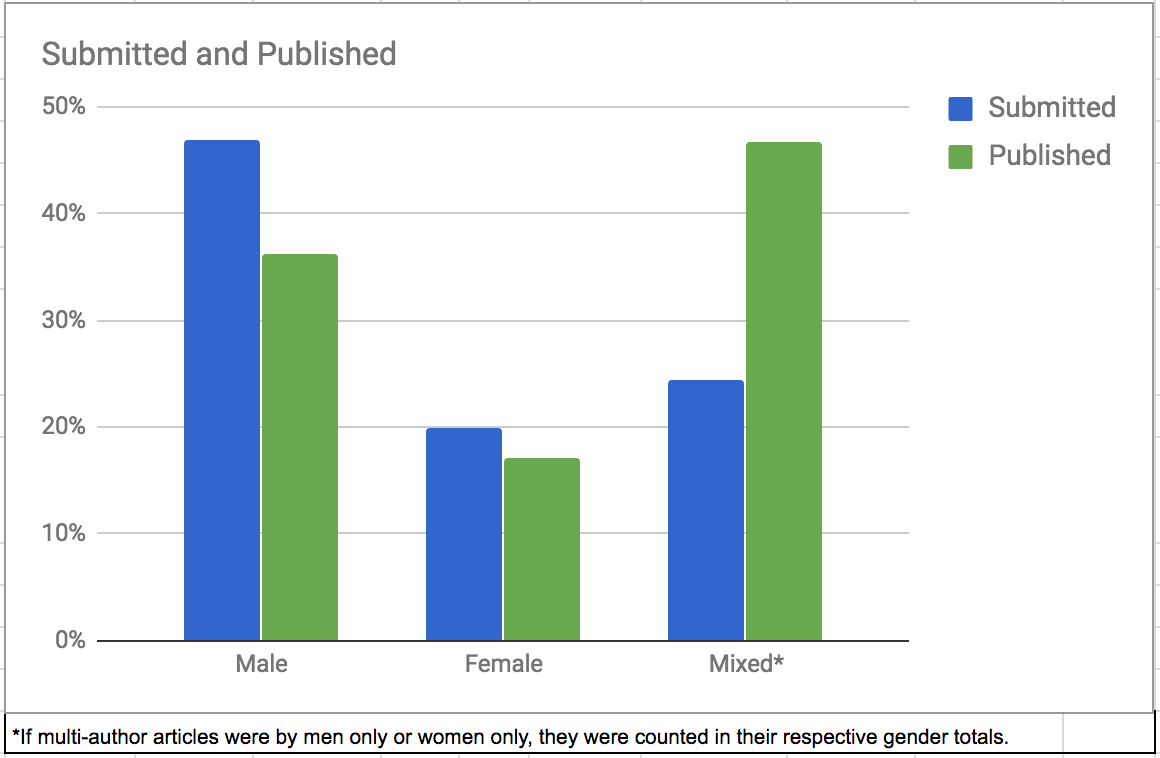by Sara Amato
During this last editorial cycle, C4LJ brought on 4 additional editors: Eric Hanson (Johns Hopkins University), Rebecca Hirsch (Yale University), Norma Palomino (Syracuse University), and Mark Swenson (Winnetka-Northfield Public Library District). This brings us to an all time high of 15 editors. This was done in order to provide some overlap with editors who have indicated their intention to step down, to provide for some capacity for editors to sit out an issue when other priorities arise, and to accommodate issues that have a particularly high volume of quality proposals. (I’ll confess that with this issue there were some good articles that didn’t make it in due to lack of an editor.) This seemed like a good time to revisit Ron Peterson’s editorial “Seeking a Diversity of Voices” http://journal.code4lib.org/articles/9345, and his follow-up last year.
As an editorial board, we appear to be mostly white with mostly a technical services, archives or systems background, and mostly from academic institutions, though there is some vendor and consortia representation. We have members from the United States, Canada and Germany. We are pleased that our new editors include representation from a public library, and slightly improve the gender balance (40% identifying as female / 60% as male). We could do a better job of both ethnic and institutional diversity. We have no members who identify as working in Public Services positions, which may not be surprising given the subject matter of the journal, but does perhaps give us some tunnel vision. Our usual recruitment for new editorial board members is through the C4L listserv and shout-outs at the conference, but we may wish to rethink this in the future to target more diverse candidates.
As of September, 2016, all submitters to the journal have been asked to fill out an optional demographic questionnaire, which 37% of submitters opted to complete. Only half of those submitted an ethnicity, with all but one self identifying as white, or a subcategory thereof, e.g. ‘white, arab american’. One could draw a myriad of conclusions from this (lack of submission diversity and unwillingness to identify as other come to mind), though it is hard to know more without more complete data.
However, using the gender portion of the demographic questionnaire combined with best guesses at name gender, which is admittedly fallible, it is possible to classify by gender 90% of the submissions over the past 18 months. In Peterson’s 2014 editorial he noted that “Women make up less than 40% of the authors published in the Journal.” This raised the question of how do acceptance rates compare to submission rates by gender. In the chart below you can see that while the majority of submissions are by male authors, their acceptance rate is not proportionally higher than for submissions by female authors. Perhaps most notable is if an article is authored by a mixed gender group, it appears more likely to be published. One can only guess as to the reasons for this, but let us hope that is because when we increase the diversity of voices, we end up with better products.

Pro Tip c4lj submission to publication ratios by gender
So here is a pro tip – when working on your next submission to the C4LJ, gather a diversity of inputs to better your chances of being published.


Subscribe to comments: For this article | For all articles
Leave a Reply